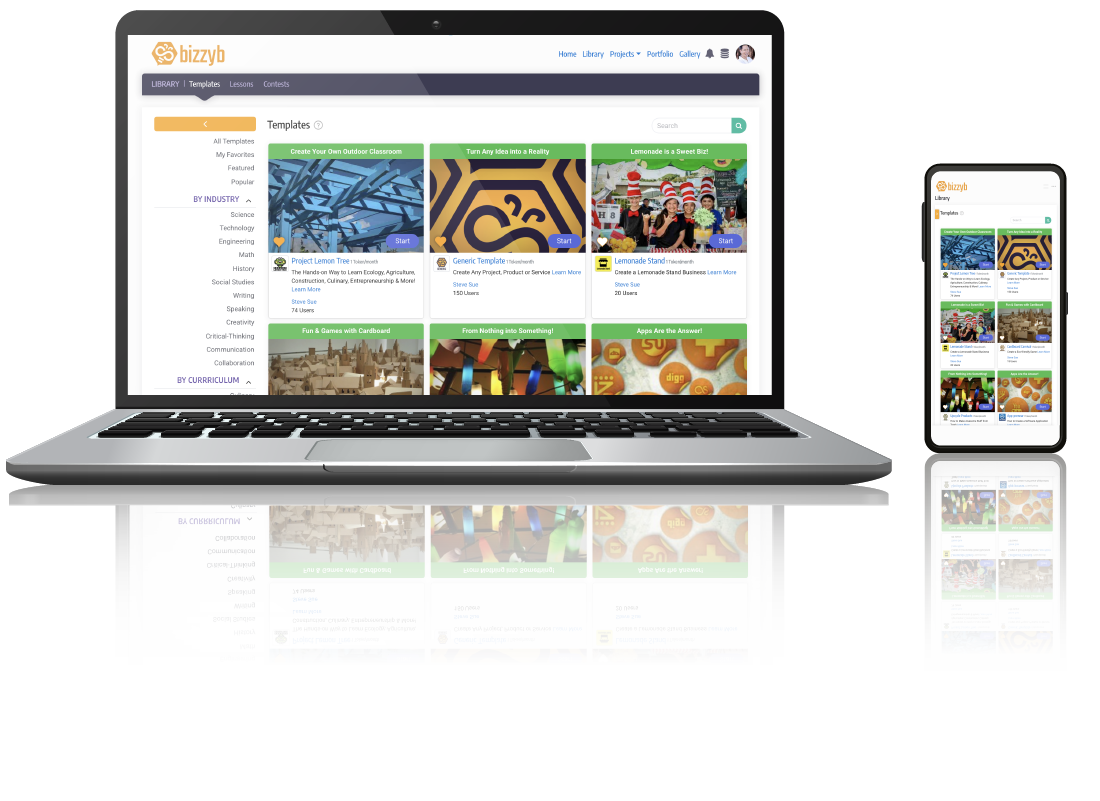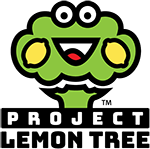How We Grew Up
Project Lemon Tree began in June 2018 as a result of research that intern Brannon Yamauchi was doing for our eco-preneur challenge, Lemonade Alley. Among other things, Brannon found that lemons are one of the best cultivated plants for removing C02 from the atmosphere. Additional study revealed many reasons that lemon trees are suitable for campuses and offer tremendous learning opportunities. We therefore created a program to give away free lemon trees to any Hawai’i schools willing to dig a hole. In the first 5 months, 60 schools, representing all Hawaiian islands signed up.
The First Planting was a lemon pergola at Thomas Jefferson Elementary in Waikiki. A community-wide team lead by Principal Garret Zakahi, Teacher Jessica Barbera, and Bizgenics included the Hawai’i Department of Education, corporate sponsors, nonprofits, administrators, teachers, parents, students and volunteers. Kalani High School Makers Club built the project.
Growing into Urban Re-Forestation happened when we found that PLT aligned with the Hawai’i Forest Action Plan, Issue 4, Urban & Community Forestry. The Plan strives to create long-term impacts that address Federal priorities including mitigation of climate change, building urban forest resilience, protecting and improving air and water quality, reducing the impacts of land use change and improving community health and well-being.
How It Works
PLT is a project-based curriculum system that empowers teachers to customize innovation projects centered around lemon tree plantings.
Quick-Start Checklist
Teachers can plan and gear up with our Checklist. PLT modular lessons make it easy to create a custom experience. See Curriculum »
Design-Thinking
PLT Curriculum includes scaffolded challenge experiences and Student Journals that foster the development of holistic PBL themes.
Modeling & Planting
Choose from a library of lemon tree projects including pot-planting, trellis and pergola building that include step-by-step instructions.
Why Lemons?
16 Lemon Factoids
A Top C02 Reducer
Of all cultivated plants, lemons are one of the best for removing C02 from the air (see Carvajal 2018 Study).
Good for Learning
Lemons offer experience in ecology, agriculture, architecture, construction, culinary, crafts and entrepreneurship.
Fit Anywhere
With small roots, lemons grow well in minimum soil conditions including pots.
Recharge Water
Lemon trees reduce soil erosion and allow rain water to soak in and restore groundwater.
No Climbing
Lemon trees grow to 15-20 feet and can be trained to discourage climbing.
Little Water
Lemon trees can survive on very little water. In deserts, lemons are recommended as a drought-tolerant ornamental tree.
Easy Care
Lemon trees require little water, pruning and pest control. Their small roots don’t break sidewalks.
A Pretty Plant
Lemon trees are pretty, have fragrant flowers and beautiful fruit.
Too Sour for Pests
Rodents and many insects don’t like the high acidity of lemons.
Great Food Source
Lemons are used for cooking in most cultures. They are nutritious and high in vitamin C.
Long Fruit Season
In tropical climates, lemons are know to fruit all year.
Many Uses
Lemons are used for health, cleaning and fragrance products.
Maker Product
Lemonade is recognized as a symbol of youth entrepreneurship.
Local Lemons
In Hawai’i, only 2.5% of lemons consumed are grown within the state (see Lemons in Hawaii).
Cure for Scurvy
In 1747, Scottish doctor James Lind cured scurvy by giving lemon juice to sailors.
Invisible Ink
For hundreds of years, spies used invisible lemon ink to relay important secret messages.
FAQs
Frequently Asked Questions About Project Lemon Tree
How flexible is the curriculum system?
PLT Curriculum is modular with 16 activities to choose from. The system is deep enough to run for multiple years.
Who needs to approve use of this system?
We suggest contacting your principal and facilities manager to discuss if this program is right for your student group.
What grades is PLT for?
PLT Curriculum is contextualized for grades K-5 and 6-12. All materials are Common Core State Standard aligned.
What do Sponsors Receive?
Sponsors receive recognition at their adopted school classroom sites. Classes are highly encouraged to write thank you letters and recognize sponsors to show gratitude and good manners.
What's included in a Curriculum Package?
Each class receives 1 lemon tree, 1 Teacher’s Guide and 20 Student Journals. This offer only applies to State of Hawai’i schools.
Is program support and advice available?
Yes. To ensure that lemon trees will thrive, “master gardeners” and experts in the field may be scheduled to make voluntary visits to provide advice and tips.
Where do we plant lemon trees?
The PLT Curriculum makes a learning moment of students determining best growing locations and conditions.
How long does it take to produce fruit?
Many trees at heights of 18″ or taller will already be flowering and bearing fruit when delivered. Lemon trees grow to full maturity in about 8 years when full fruit production will be enjoyed. A typical lemon tree can produce 200-300 lemons a year.
Who maintains the lemon trees?
When registering a class, the teacher, on behalf of the class agrees to administrate the maintenance of lemon trees including over the summer. PLT Curriculum includes an all-year Care Plan to help ensure adequate coverage and proper care. Sponsors adopting classes bear no responsibility for planting or maintaining trees.
Are Lemon Roots Invasive?
No. Lemons have a small root to canopy ratio thus do not have highly invasive roots. Lemons also produce well when planted in pots.
Are Lemon Trees Drought Tolerant?
Yes. Lemon trees are recommended as ornamental trees in drought locations such as California and Arizona desert areas. Regular watering however, does help optimize fruit production.
Do lemons attract rodents?
No. The high acid of lemons deter rodents, any many insects.
Is the Huanglongbing virus a threat?
Yes. You should aware to never import citrus on your own as you may inadvertently introduce deadly viruses into your location. All PLT trees in Hawai’i are safely imported by the University of Hawai’i College of Tropical Agriculture and Human Resources.
How big are the trees?
PLT trees ship at a height of at least 18″ tall in one gallon sleeves.
What can we do with the lemons?
School groups can decide what to do with their lemon including using them, selling them or giving them away. All we ask is you report your output each year so we can record the impacts that you have contributed to the community.
Who will harvest the fruit?
Student groups are responsible for harvesting fruit and maintaining trees.
How will trees be distributed?
The University of Hawai’i at Manoa, College of Tropical Agriculture and Human Resources (CTAHR) is currently maturing seedlings and will distribute from their locations. Volunteer groups will most likely deliver trees to school sites.
When will trees be distributed?
Trees have been distributed since June, 2018. Trees will be distributed in lots as they mature through the growing cycle.
PLT Now at BizzyB.com!
GET MODERN. SAVE TREES. PLT is a featured project at BizzyB, the student project-based learning platform published by Bizgenics. BizzyB features multi-user collaboration, remote mentoring, awesome presentation formats like slideshows & business plans, digital student portfolios & aspiration and skills assessments.
HAVE A GREAT PROJECT YOU WANT TO SHARE? BizzyB offers a 20% revenue share to project template authors. Teacher and students alike are invited to post templates.

